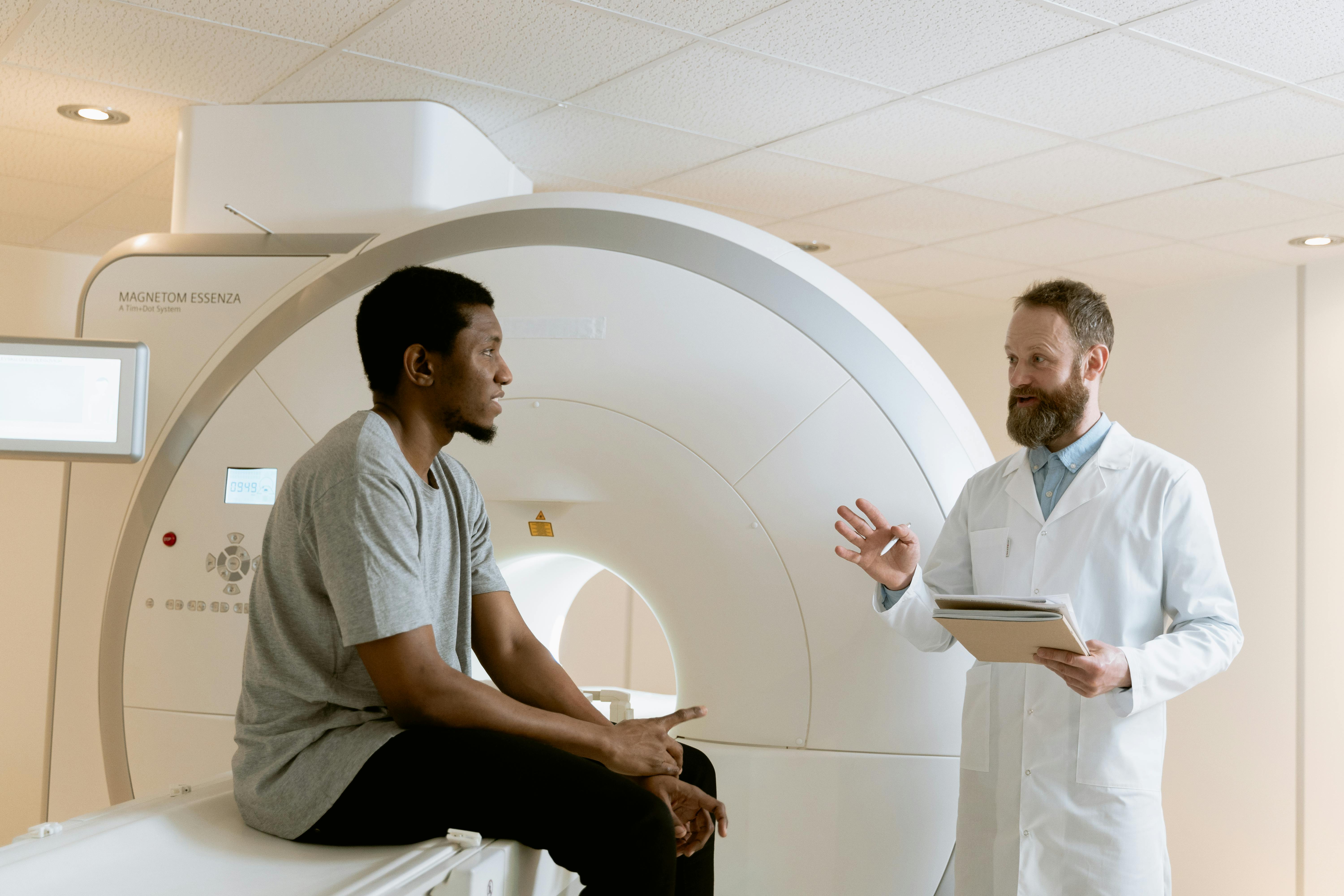27 Mar, 2024
What’s Covered by a Full Body MRI Scan? Protocols and Procedures

A full body MRI scan is a preventative screening test, designed to detect warning signs of diseases such as cancer before any noticeable symptoms develop.
By having regular MRI screenings (we recommend annually), you can keep on top of your health, and feel safe in the knowledge that if anything abnormal were to be found, you’d have optimal treatment opportunities.
What is included in a full body MRI scan?
Here at Scan.com, we work with a range of industry-leading scanning centres with state-of-the-art facilities. This gives you greater choice over where and when you decide to have a scan.
This does mean that there are slight variations in which areas of the body are covered by a full body scan, depending on the protocol at the imaging centre you choose.
Find the name of the scanning centre you wish to select below, and find out which body areas are covered by the scan. You'll notice that the key differences are whether the scan covers the chest and/or the spine.
Orpington & Canary Wharf (Lyca Health)
- Brain (including MRA of the circle of Willis blood vessels)
- Neck blood vessels (including MRA of the carotid vessels)
- Chest (excludes heart and lungs)
- Abdomen (overview of liver, kidneys, spleen, pancreas, gallbladder)
- Pelvis (female: includes uterus, ovaries and urinary bladder, Male: includes prostate and urinary bladder).
Guildford, Surrey, Taunton, Wythenshawe, Colchester, Marylebone, Enfield (Alliance Medical)
- Brain (including MRA of the circle of Willis blood vessels)
- Neck blood vessels (including MRA of the carotid vessels)
- Chest (excludes heart and lungs)
- Abdomen (overview of liver, kidneys, spleen, pancreas, gallbladder)
- Pelvis (female: includes uterus, ovaries and urinary bladder, Male: includes prostate and urinary bladder)
- Spine
Preston, Penrith, Leeds, Sleaford, Spalding, Louth (SG Radiology)
- Brain (including MRA of the circle of Willis blood vessels)
- Neck blood vessels (including MRA of the carotid vessels)
- Abdomen (overview of liver, kidneys, spleen, pancreas, gallbladder)
- Pelvis (female: includes uterus, ovaries and urinary bladder, Male: includes prostate and urinary bladder)
- Spine
Medneo London Centre
- Head (including MRA of the circle of Willis blood vessels)
- Chest (excludes heart and lungs)
- Abdomen (overview of liver, kidneys, spleen, pancreas, gallbladder)
- Pelvis (female: includes uterus, ovaries and urinary bladder, Male: includes prostate and urinary bladder)
- Spine
Newton-Le-Willows (Pall Mall)
- Head (including MRA of the circle of Willis blood vessels)
- Neck blood vessels (including MRA of the carotid vessels)
- Abdomen (overview of liver, kidneys, spleen, pancreas, gallbladder)
- Pelvis (female: includes uterus, ovaries and urinary bladder, Male: includes prostate and urinary bladder)
- Whole spine
Milton Keynes (Vitalscan)
What is a scanning protocol?
MRI scans can be widely used for multiple areas of the body. A protocol tells the scanner and the person operating it which sequences to use for optimal imaging of the body area. They are designed to ensure the quality, efficiency and consistency of each scan completed.
There are guidelines and principles for scanning protocols, but for package scans like full body MRIs, each scanning centre decides which protocols and sequences to include in their own package.
Why do the scanning centres exclude the heart or lungs from their full body scans?
It is not the scanning centre that excludes these organs in their scans, it is simply because the scanning protocol and use of MRI is not the best scanning method for the heart or lungs.
The lungs are full of air, while MRI scans are particularly useful for scanning soft tissue, fluid-filled, or fatty areas. CT imaging is the recommended method for lung screening or diagnostic scans of the lungs. Meanwhile, there are multiple different scanning types suitable for the heart, but they are often more complex in terms of equipment, staffing and reporting required. This means that they are not well-suited to a long procedure such as a full body scan, so are generally not included as part of the overall protocol and would not be a focus of the radiologist's report.
How do I know which full body scan I should choose?
For a screening test, the easiest way to decide which to choose is the location closest to you. The scan is designed to provide a convenient method for checking in on your overall wellbeing.
If you have a specific concern in an area of your body, or symptoms you're concerned about, we recommend booking a diagnostic scan for detailed answers about your particular condition, rather than getting a screening of your whole body.
Our clinical team provides telehealth consultations for £50, that you can book if you're not sure which scan to get and would like advice from an expert. If you do decide to book a scan afterwards, there is no obligation to book with us, however, you'll get £50 discounted off your scanning costs to reimburse the cost of your pre-scan consultation.
Book a full body scan
It's easy to book a full body scan online with Scan.com. It takes just five minutes to book, and you'll receive pre and post-scan advice from our clinical team.
They'll also provide guidance about your results, to help you understand them and act on them if any treatment or onward care is needed.